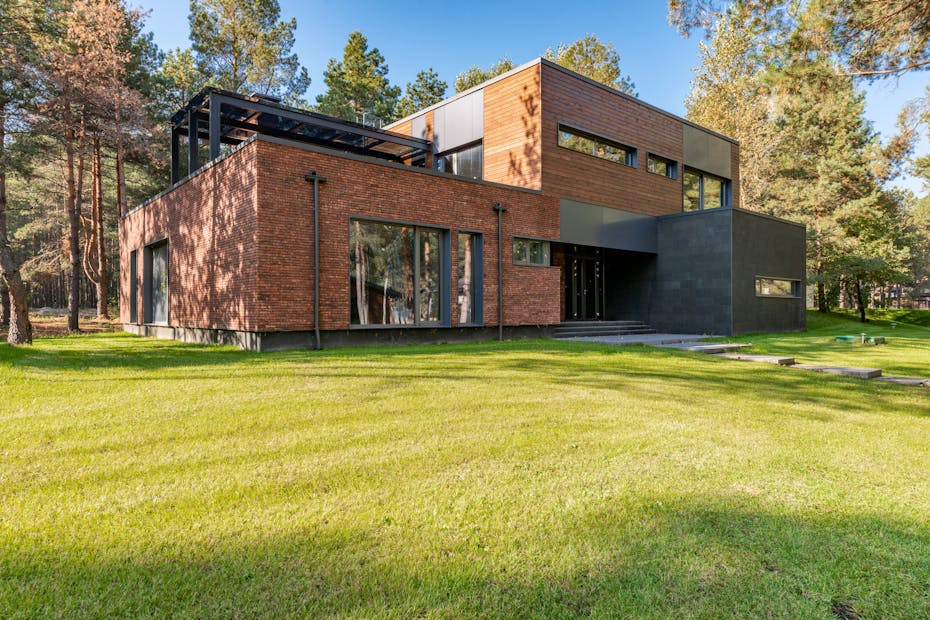Introduction to Sustainable Architecture
Sustainable architecture focuses on designing and constructing buildings that minimize environmental impact while promoting energy efficiency and resource conservation. It incorporates innovative methods and technologies to reduce carbon footprints, limit waste, and increase the use of renewable energy sources. Key principles include energy-efficient building materials, passive design strategies, and water stewardship. Architects prioritize durability, adaptability, and ecological harmony to ensure long-term sustainability. Collaborative efforts between architects, engineers, and environmental planners shape solutions that address both urban and rural needs. By balancing functionality and aesthetics, sustainable architecture redefines how human habitats coexist with nature, setting a new standard for responsible development.
The Environmental Impact of Traditional Building Practices
Traditional building practices often rely on resource-intensive methods and materials, contributing significantly to environmental degradation. The extraction and processing of materials such as concrete, steel, and brick consume vast amounts of energy, emitting high levels of greenhouse gases. According to studies, cement production alone accounts for approximately 8% of global CO₂ emissions.
Additionally, deforestation driven by the demand for timber exacerbates habitat destruction and biodiversity loss. Construction waste from conventional methods frequently ends up in landfills, further straining waste management systems. Water usage during production processes can lead to depletion of local water resources, creating long-term ecological imbalances.
Core Principles of Sustainable Architectural Design
Sustainable architectural design hinges on integrating environmentally responsible strategies across all phases of building development. Key principles include:
- Energy Efficiency: Prioritizing renewable energy sources, optimizing insulation, and implementing passive heating and cooling systems to reduce energy consumption.
- Material Selection: Utilizing recyclable, non-toxic, and locally sourced materials to minimize waste and reduce carbon footprints.
- Resource Conservation: Incorporating water-efficient fixtures, rainwater harvesting systems, and sustainable landscaping to manage natural resources responsibly.
- Design Longevity: Ensuring structural adaptability to extend lifespan and accommodate future needs without requiring significant reconstruction.
- Indoor Environmental Quality: Enhancing occupant well-being through natural lighting, ventilation, and use of low-emission materials.
These principles guide architects in creating designs that balance functionality, aesthetics, and ecological impact seamlessly.
Innovative Materials and Technologies in Eco-Friendly Construction
Eco-friendly construction is increasingly defined by cutting-edge materials and advanced technologies designed to minimize environmental impact while maximizing efficiency. Emerging materials like cross-laminated timber (CLT) offer renewable, low-carbon alternatives to steel and concrete. Bioplastics and mycelium-based composites provide biodegradable solutions for insulation and structural components.
Advanced technologies complement these materials. Smart building systems leverage IoT sensors to monitor and optimize energy use. 3D printing enables precise, waste-reducing construction methods. Recycled materials, such as reclaimed wood and repurposed plastics, promote circular economies.
Innovations in green roofing systems and solar-integrated façades further enhance sustainability. These advancements empower architects to meet ecological goals without sacrificing functionality or aesthetic appeal.

Economic and Social Benefits of Sustainable Buildings
Sustainable buildings offer extensive economic advantages by reducing energy consumption and operational costs. Structures designed with energy-efficient technology often utilize renewable energy sources, decreasing reliance on traditional utilities and lowering monthly expenses. Over time, the demand for such properties has also driven increased market value and higher occupancy rates, benefitting owners and investors.
Socially, these buildings promote healthier living environments through improved indoor air quality and natural lighting. Enhancements in workplace productivity and occupant well-being are linked to eco-friendly designs. Moreover, sustainable development fosters job creation in green construction and innovation sectors, contributing to local economies and community growth.
The Role of Policy and Education in Advancing Sustainable Architecture
Policy and education serve as pivotal drivers in promoting sustainable architecture. Through cohesive governmental policies, frameworks can be established to incentivize eco-friendly construction practices, such as tax credits for green buildings or stricter regulations on carbon emissions from construction materials. Policy initiatives also encourage the adoption of renewable energy sources and energy-efficient designs within architectural standards.
Meanwhile, education equips both professionals and the public with the knowledge necessary to prioritize sustainability. Architectural programs integrating green design principles foster innovation among future architects. Public awareness campaigns enhance understanding of sustainable living, ensuring widespread support for environmentally responsible designs. Together, policy and education create a foundation for transformative change.
Conclusion: Paving the Way for a Sustainable Future
Sustainable architecture serves as a critical response to the pressing challenges posed by climate change and resource depletion. By integrating renewable energy sources, environmentally friendly building materials, and passive design strategies, the construction industry can significantly reduce its ecological footprint. This approach also enhances energy efficiency, cutting long-term costs for both developers and occupants. Additionally, green building certifications such as LEED and BREEAM incentivize broader adoption of sustainable practices. By prioritizing thoughtful, adaptive design, architects and developers can address urbanization needs while safeguarding future generations. These measures collectively ensure that architecture evolves responsibly, balancing innovation with ecological responsibility.
Finally, for more on INJ Architects:
